Shop | Talk 2025: Advice for students
November 12, 2025
The architecture and design firms that participated in the recent Shop | Talk career fair at the Azrieli School of Architecture & Urbanism range from offices of a few people to big, international corporate firms. Some have specialized areas of work, others are broad-based. Locations and projects are both metropolitan and remote.
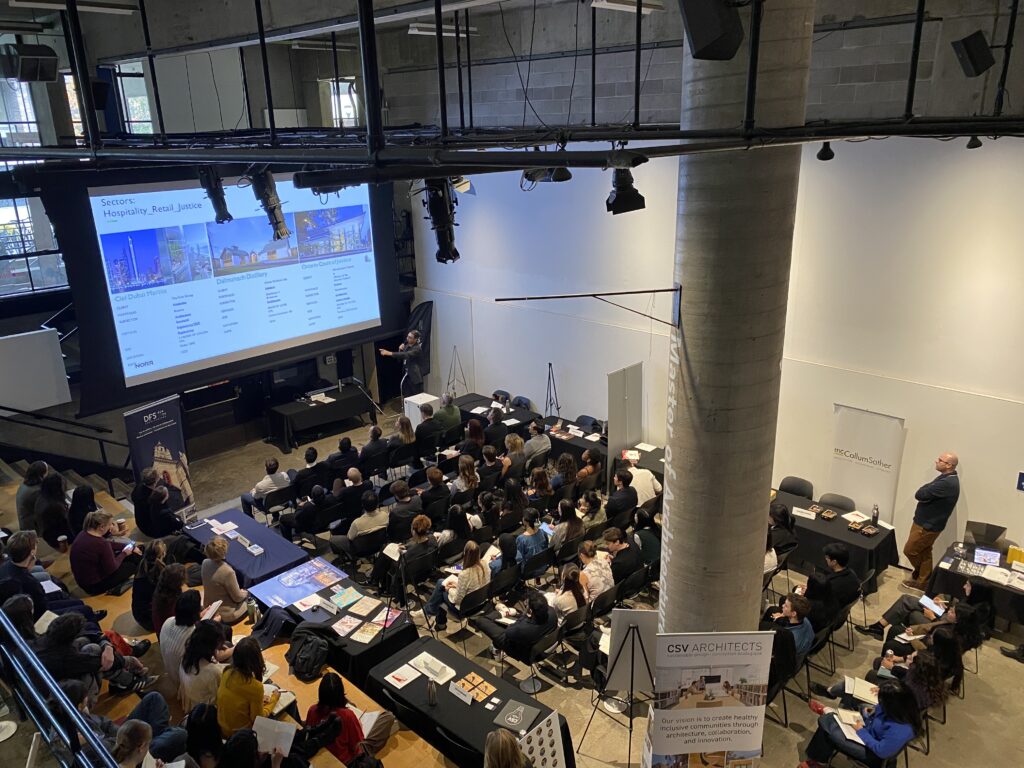
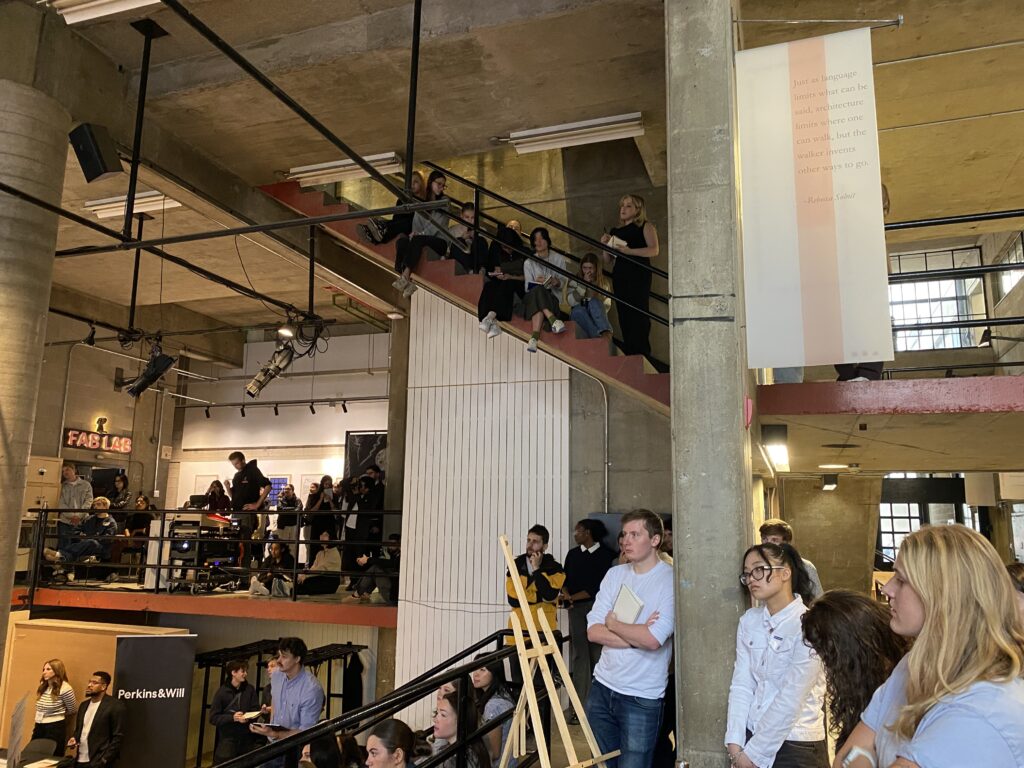
Despite the differences, their advice to students looking for work is remarkably consistent.
Students and employers need to be a good fit. Students should research the firms they apply to for suitability. Portfolios and resumés should show care and differentiate the applicant. Contacts and relationships are important. So is timing — “no” often means “not now.”
About 50 professionals representing 23 firms attended the November 6 event at the Architecture Building, as did about 250 students — many of whom expressed appreciation for the opportunity to speak to practitioners.
Here is some of their advice to students seeking a co-op placement or job.
Portfolio and resumé
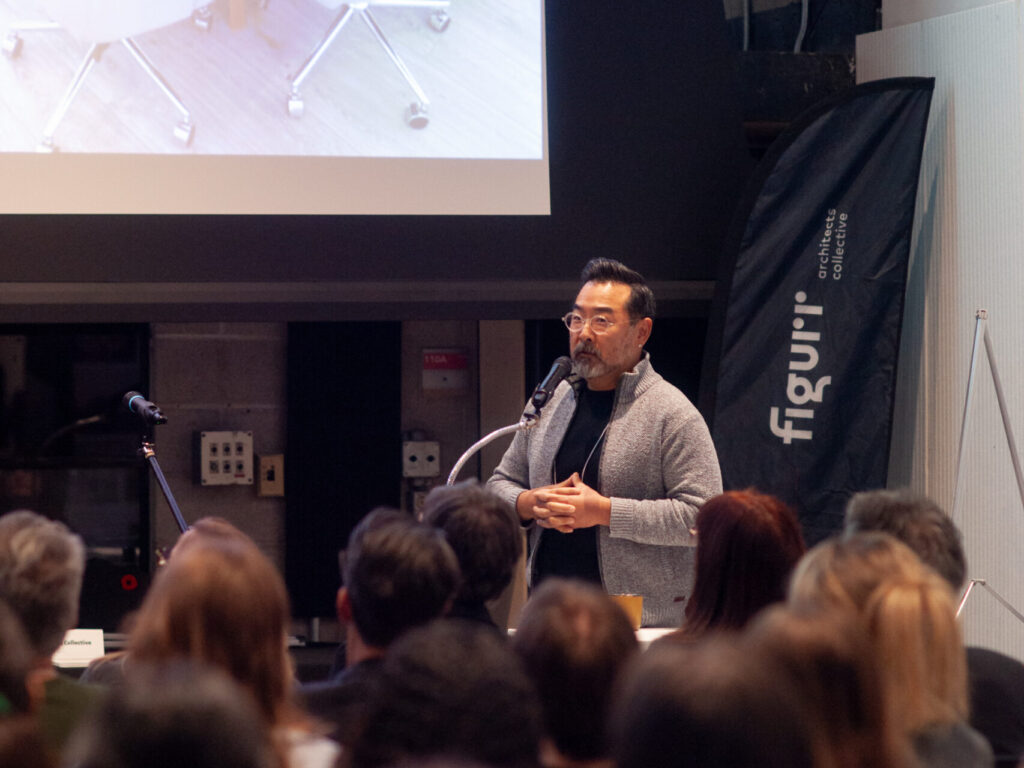
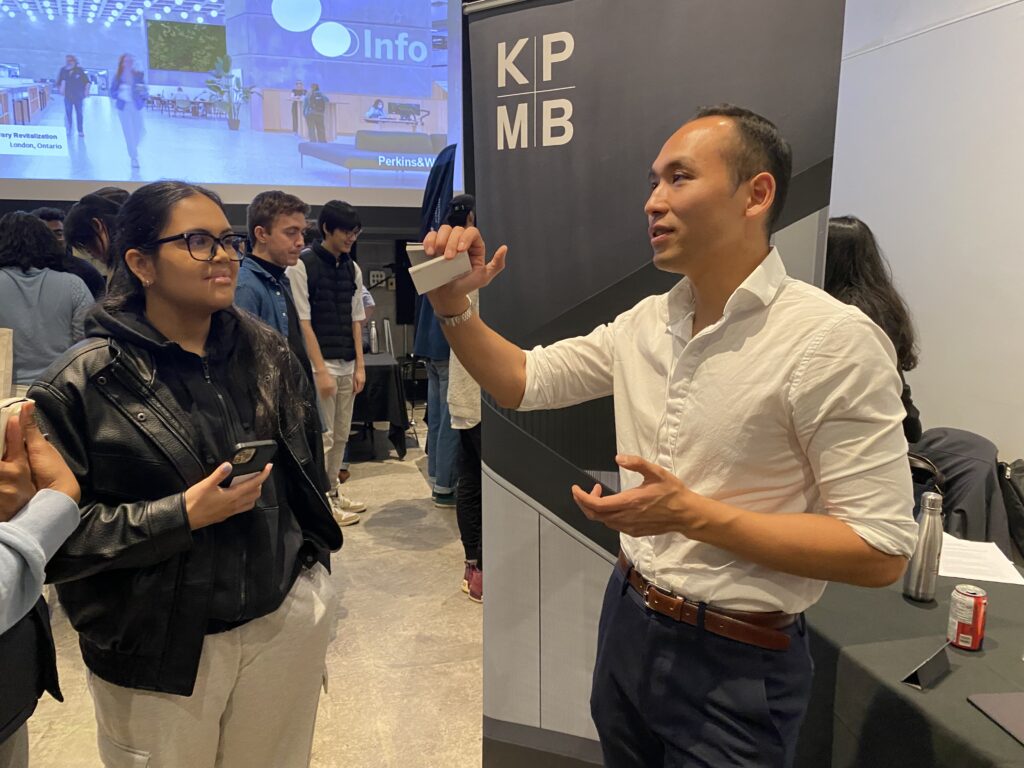
Raymon Yim, of Urbantypology, puts it succinctly. “Every opportunity, whether it be through a resumé or through email, is a design problem. And the effort that an applicant puts into every aspect is important because it’s all about first impressions.”
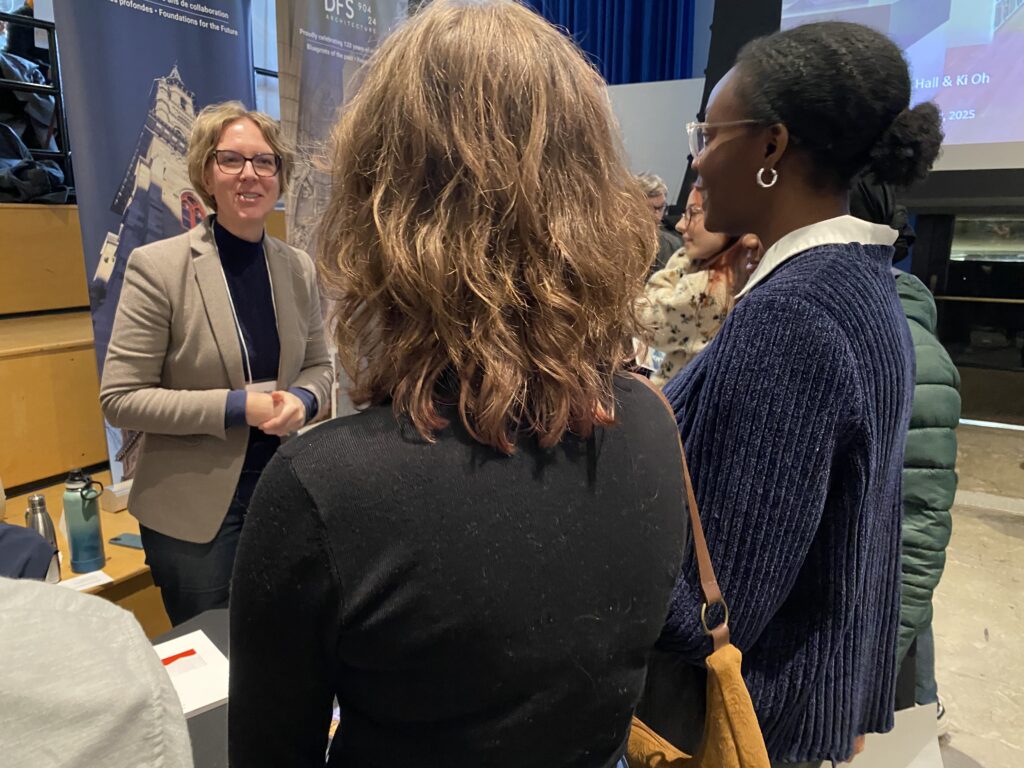
Tara Plett, of Diamond Schmitt, notes, “You have to find a way to stand out, but you have to be yourself. Show who you are through your work. Show a diversity of interests, but your own interests. Speak with enthusiasm.”
Ki Oh, of KPMB Architects, stresses the importance of a strong portfolio. “Within 30 seconds to a minute, you have to draw the attention of the viewer. You’re trying to explain your story to a person who has never seen it before.”

Roberto Campos, of Figurr Architects Collective, observes, “a lot of the portfolios that we see are really trying to push their graphic skills, and the project gets lost. Talk about the work. Talk about your skills.”
Know about the firms you are applying to
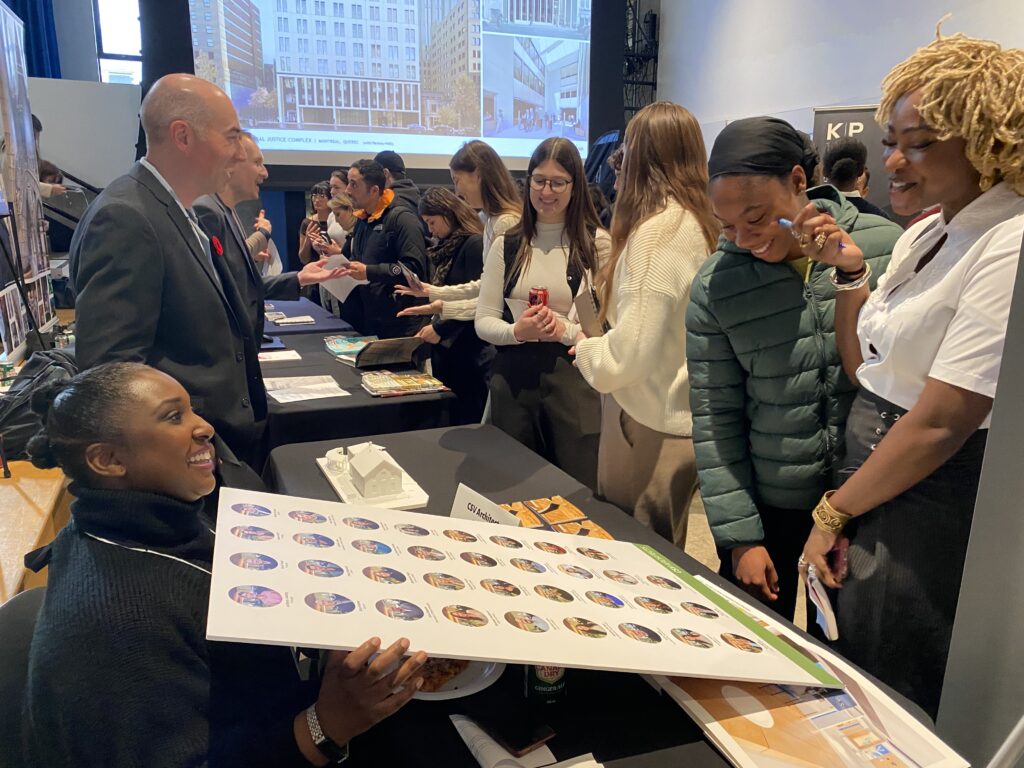
Camille Lewis, of CSV Architects, advises: “What you should be doing is researching your firms and making sure your interests, goals, and values align. You need a job, but you and your employer need to be a good fit. Show your skills, show that you are interested in learning, that you want to be a team player, and that you have goals for your career.”
Firms can be very different. KWC Architects wants people at the start to be willing to help with a wide range of types of work types. Merrick & Company needs staff who are comfortable with science and scientists. Taylor Architecture Group works up north. Juxta Architects and ERA Architects focus on conservation. Urbantypology does urban and landscape design.
Interest and aptitude
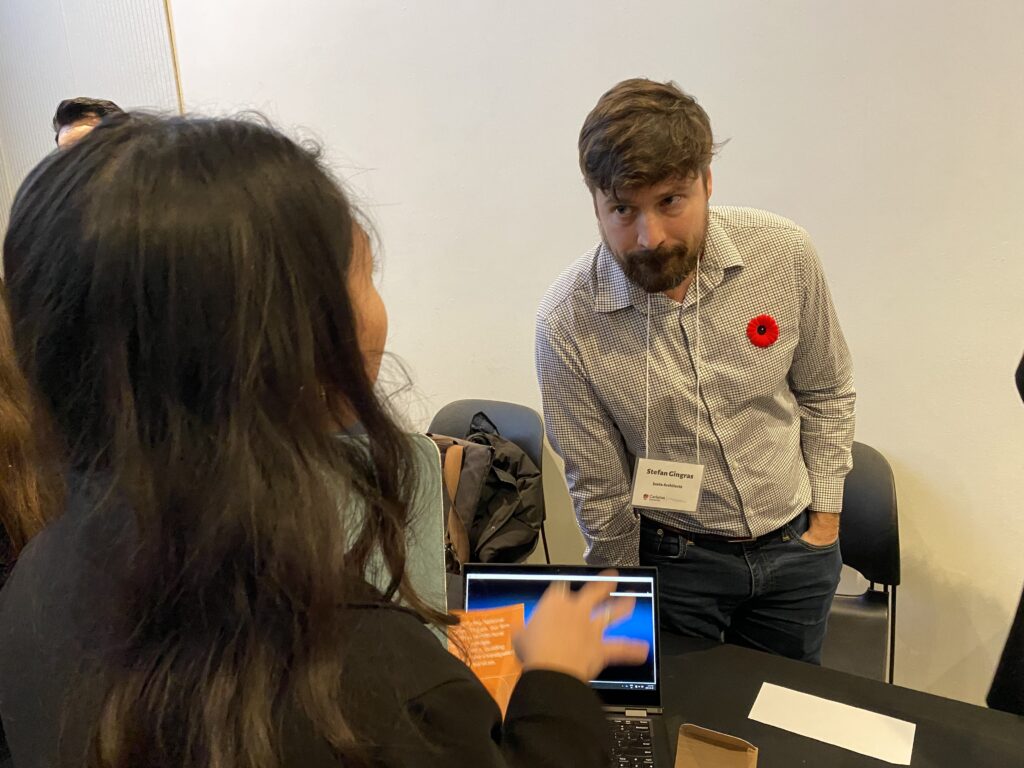
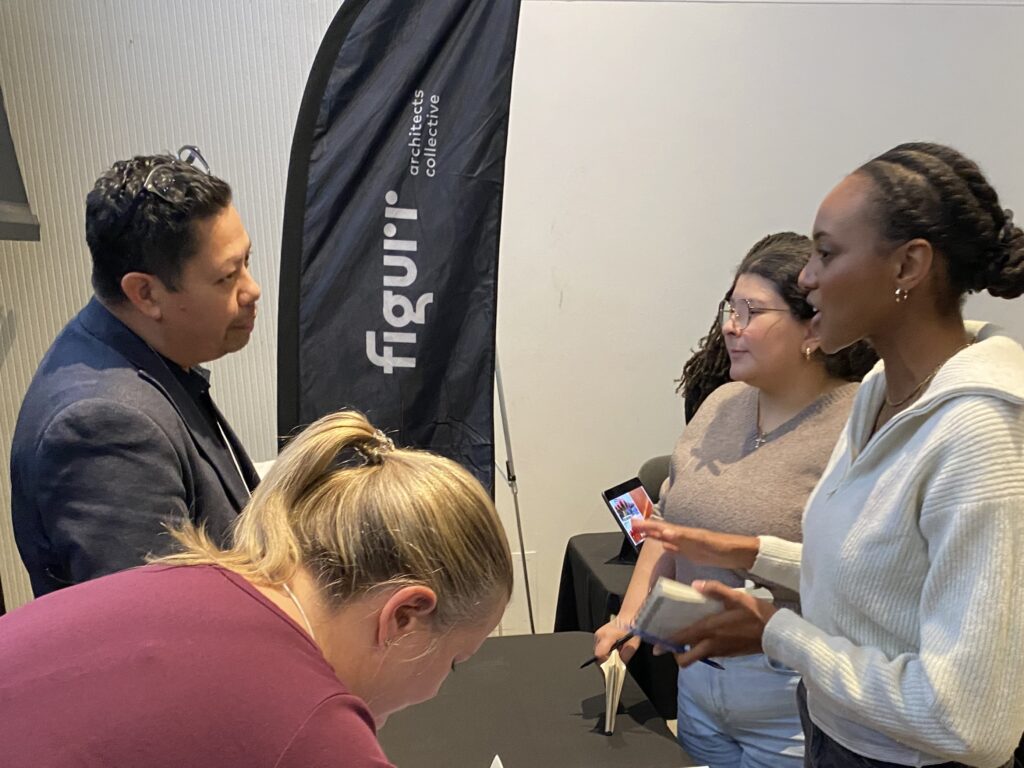
Showing up in person can demonstrate commitment. While larger firms tend to have online application processes and HR departments, showing up in person can be worthwhile. “We rarely have people show up anymore in the office with a CV in hand, but we’re always impressed when they do,” says Stefan Gingras, of Juxta Architects.
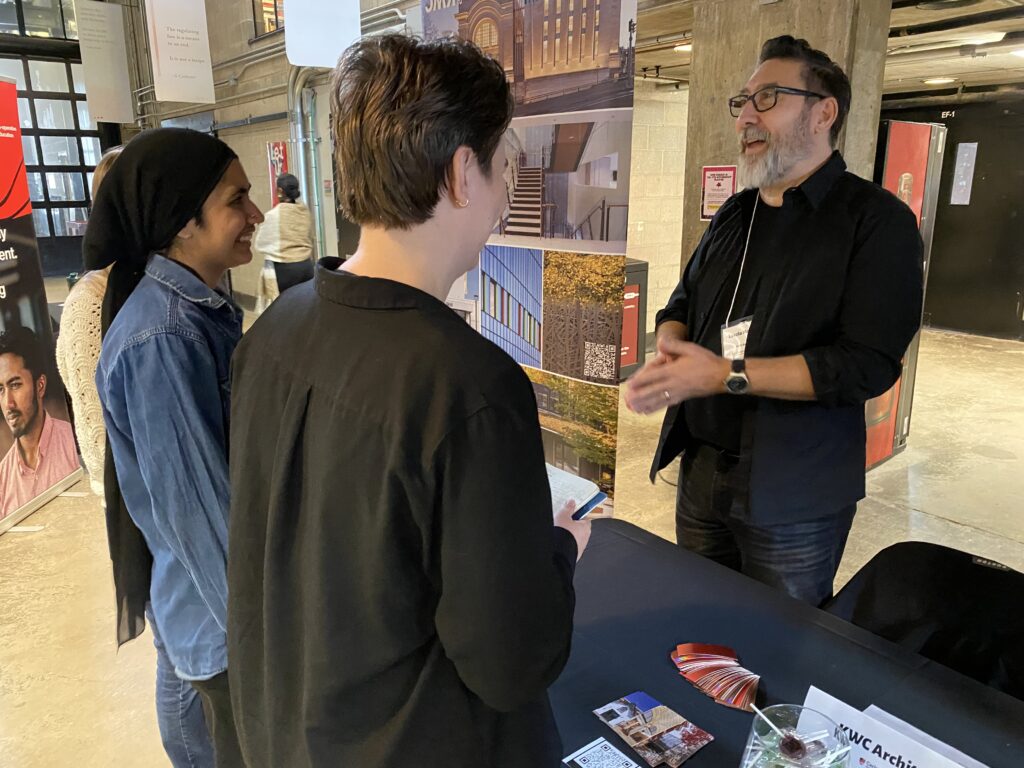
Laszlo Mohacsi, of KWC Architects, adds that they look for an aptitude to learn. “It’s not necessarily knowing it all as they come out of school, but that they have a good, solid base and an aptitude.”
Roberto Campos, of Figurr Architects Collective, agrees. “If you really want to get into a specific firm, something like ours, then don’t be afraid to come knock on our door and say, ‘I’m interested.’ To submit your resume into a file that’s going to have hundreds of resumes, it’s very easy to get lost, especially in times we may not be specifically looking.”
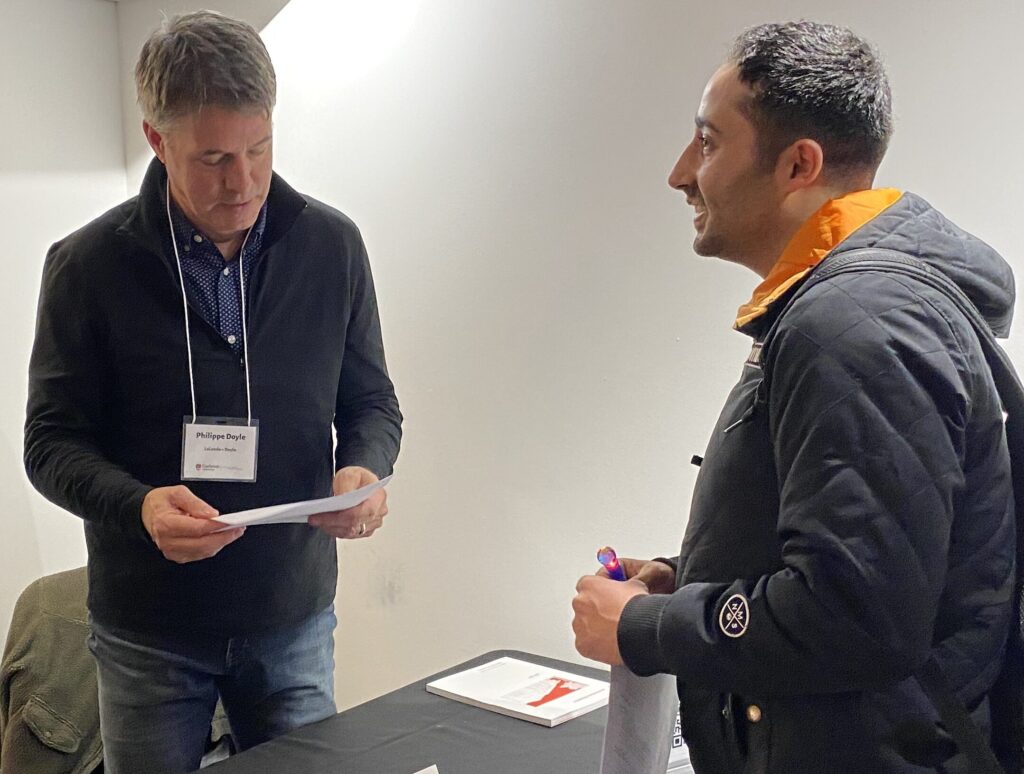
“We don’t expect someone straight out of school to have a lot of experience,” says Philippe Doyle, of Lalande + Doyle Architects. “So, they need to come in as prepared as they can and present themselves as a person who would be a good fit to the culture and values of the company, will work at it, and become a good asset.”
Timing and follow-up
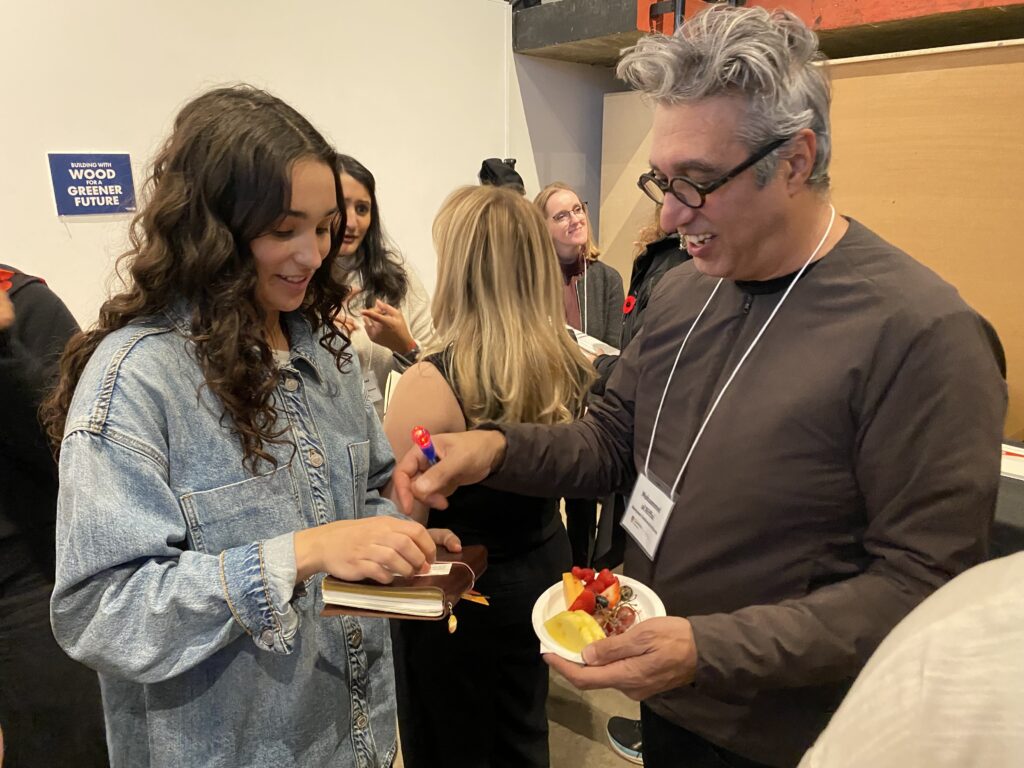
“Always follow up,” advises Mohammed al Riffai, of Moriyama Teshima Architects.
“You submit a resume — you might get an interview, or you might get ‘I’m sorry we don’t have work right now’. Architecture offices are project-based. So, after you leave the office, 12 hours later, we might get news that we have a job. ‘’Oh, let’s call this person. They were a good fit. We have work for them.’ But that might happen two months later, four months later.
“My biggest advice is to call and check in. Just because you haven’t heard from someone doesn’t mean there’s not a place for you at the firm. It just wasn’t the right time.”
Contacts and relationships
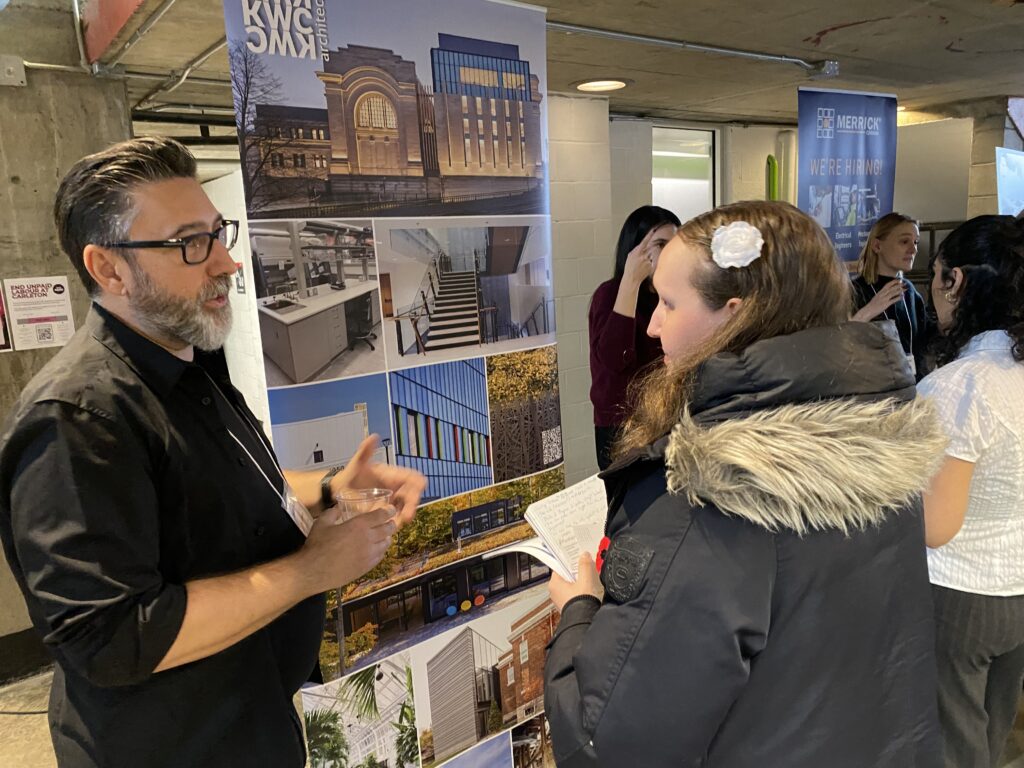
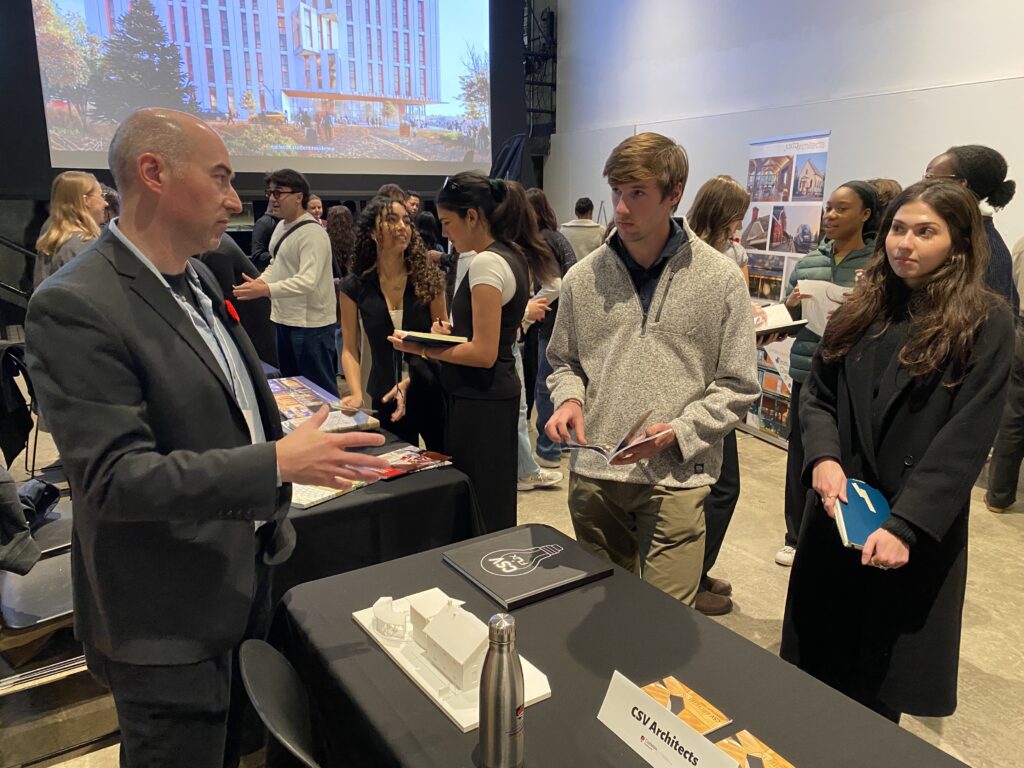
Laszlo Mohacsi, of KWC Architects, advises “getting out and meeting people in the business. For example, being part of ORSA, the Ottawa Regional Society of Architects, because through their events, you are mingling with architects and colleagues, or recent graduates.” Work applications can follow.
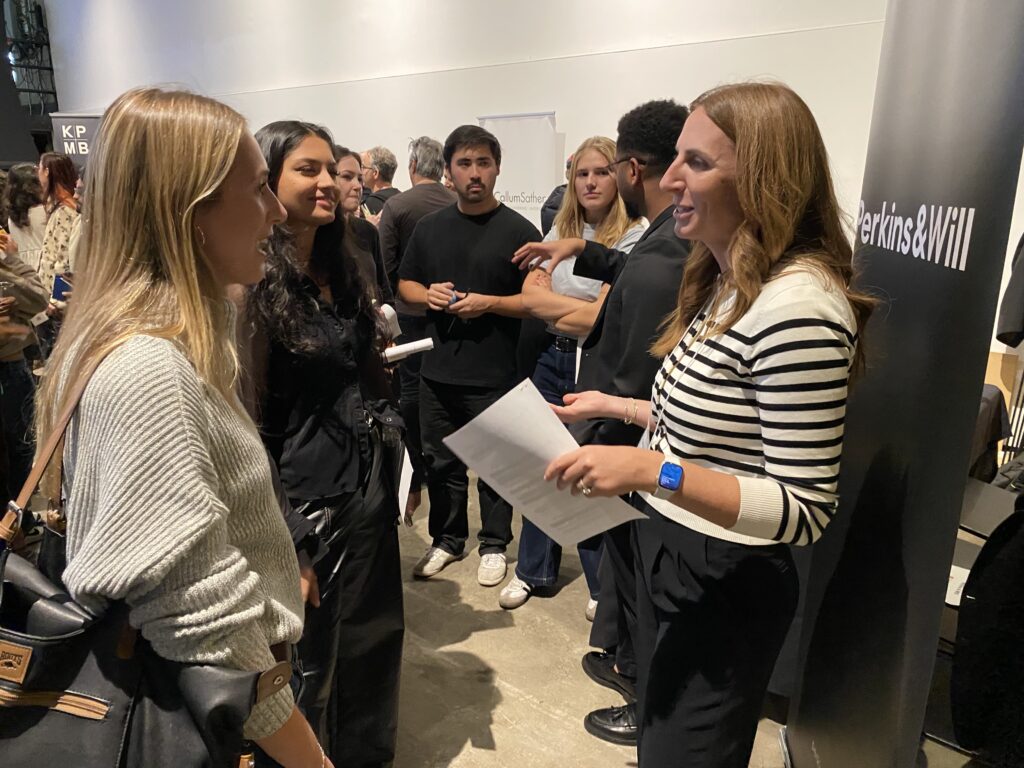
Cody Wainstock, of Perkins & Will, recommends “reaching out to firms while still in school, maintaining relationships, looking for mentors, asking for advice, and connecting with recent grads who have paved opportunities for themselves.”
Rick Kellner, of CSV Architects, agrees that activities like ORSA Architecture Week and similar “go a long way in building relationships for potential opportunities.”

“A big part of it is outreach,” says Arne Suraga, of Diamond Schmitt. “Because it’s such a small, tight-knit community, it is a lot about the connections you make, and networking and meeting people, putting a face to a name. It’s those moments when you find a student who’s really interested in pursuing a particular career path and being able to connect with a person in the industry who’s working on something that’s directly down that path.”